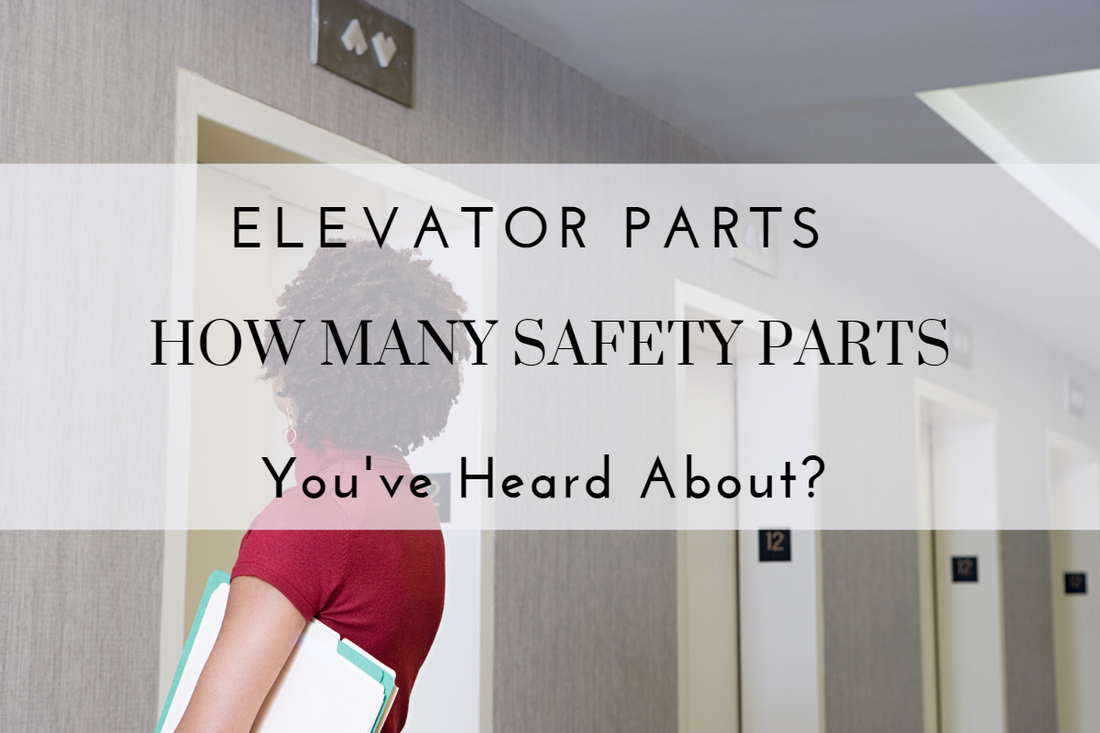Elevator safety parts are indispensable products in elevator function. How much have you heard of it? Now let us find out what safety components are on the elevator.
1. Buffer
The buffer is the elevator safety device that provides the last kind of safety protection. It is generally installed in the pit of the elevator shaft, directly below the car and the counterweight. When the elevator is moving upwards or downwards, due to an accident in the elevator operation, it cannot be effectively stopped and exceeds the bottom or top floor of the terminal floor, the buffer will act as a buffer to prevent the elevator car or counterweight from directly hitting the bottom or top. Protect the safety of passengers and equipment.
The buffer is installed in the bottom pit of the elevator shaft. Its function is to prevent the bottom of the elevator pier. It can reduce the impact when the elevator pier bottoms, so as to reduce the damage to the elevator itself and the passengers in the elevator.
There are two types of buffers: energy storage type and energy consumption type. At present, there are three main types of buffers commonly used in the market: hydraulic buffers, polyurethane buffers, and spring buffers. Among them, the hydraulic buffer is the most widely used energy-consuming type, and the polyurethane buffer and spring buffer are energy-storage types. Because of their low price, they are often used in low-speed elevators.
2. Speed Governor
The speed limiter, as it literally means, is a device that limits the speed of the elevator.
The speed limiter is one of the safety control components in the elevator safety protection system. When the elevator is running for any reason and the car is in danger of overspeeding or even falling, and other safety protection devices do not work, the speed limiter and the safety gear or the upward protection device will have a linkage action to stop the elevator car. The speed limiter is generally located on the floor in the elevator machine room, but the speed limiter can also be directly installed on the load-bearing beam. The machine room-less speed governor will also be installed on the guide rail or on the pit floor.
The speed limiter is an overspeed detection device, which is generally installed on the top of the elevator machine room or the elevator shaft, and is also installed in the bottom pit.
When the elevator overspeed reaches the set electrical action speed, it will cut off the safety circuit of the elevator through the electrical switch, and then cut off the system power supply.
If the elevator continues to overspeed due to gravity or inertia, the mechanical action device of the speed limiter will be triggered to stop the speed limit wire rope, thereby pulling the safety gear.
3. Tensioner Device
The wire rope of the elevator tensioning device winds around the speed limiter and connects with the safety gear connecting rod pull arm to form a speed limiter-safety gear protection device, which plays a role in protecting the speed limit of the elevator.
The tensioning device is connected with the safety gear and the speed limiter by a steel wire rope. The contact is in a normally closed state, and the safety circuit will be disconnected when the elevator traction wire rope breaks. The wire rope of the tensioner is connected with the connecting rod pull arm of the safety gear, and the connecting rod pull arm of the safety gear is mounted on the car and moves together with the car. When the car moves up and down, the wire rope that drives the tensioner moves together. If the car overspeed occurs, the speed limiter will act, disconnect the safety circuit, and pull the wire rope, pull the connecting rod arm of the safety gear connected to it, make the safety gear move, and lock the car on the guide rail.
4. Safety Gear
The elevator safety gear device is under the control of the speed limiter, when the speed of the elevator exceeds the speed set by the speed limiter, or when the suspension rope breaks and relaxes, it will stop the car in an emergency and clamp it on the guide rail.
It provides effective protection for the safe operation of the elevator, and is generally installed on the car frame or counterweight frame.
The safety gear device consists of two parts: the operating mechanism (safety gear linkage mechanism) and the braking mechanism (safety gear).
The function of the lifting mechanism is to transmit the mechanical action of the speed governor to the braking mechanism and make the braking mechanism act. After the braking mechanism is activated, the wedge-shaped block inside the elevator will be stuck on the guide rail to prevent the elevator from falling further.
Commonly used safety gear includes momentary and progressive.
The instantaneous type brakes the elevator car instantly after the action of the safety gear. Its braking time is short but the impact is large, and it is generally only used for freight elevators with relatively low speeds.
The progressive type is to slide for a period of time after the safety gear moves, and then gradually decelerate to braking. The deceleration must be less than the acceleration of gravity. This type of safety gear is widely used in passenger elevators.


